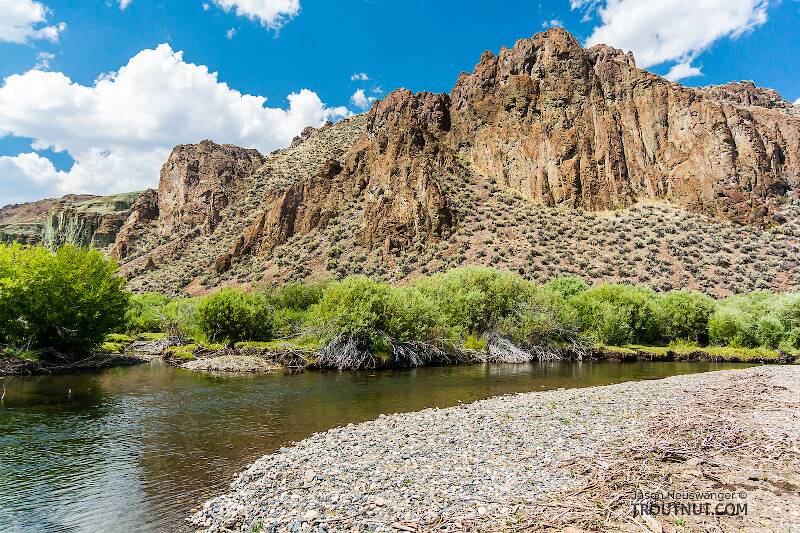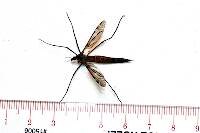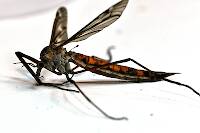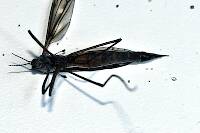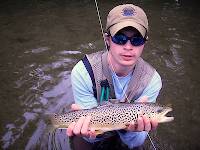
Salmonflies
Pteronarcys californica
The giant Salmonflies of the Western mountains are legendary for their proclivity to elicit consistent dry-fly action and ferocious strikes.
Featured on the forum

This one pretty clearly keys to Kogotus, but it also looks fairly different from specimens I caught in the same creek about a month later in the year. With only one species of the genus known in Washington, I'm not sure about the answer to this ID.

Troutnut is a project started in 2003 by salmonid ecologist Jason "Troutnut" Neuswanger to help anglers and
fly tyers unabashedly embrace the entomological side of the sport. Learn more about Troutnut or
support the project for an enhanced experience here.
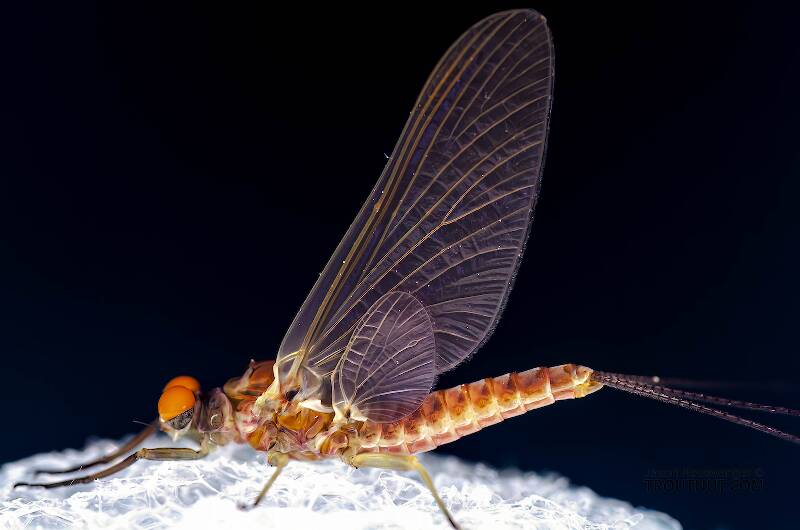
I collected this male Hendrickson dun and a female in the pool on the Beaverkill where the popular Hendrickson pattern was first created. He is descended from mayfly royalty.
Jpsully on Jan 10, 2007January 10th, 2007, 6:59 am EST
Jason:
Looking at the fifth photo from the top (the one with the ruler under the fly), it would appear that if you were to rotate the fly just a bit to the left, it would show that the fly is over one inch (25mm) long. That would make it twice as long as any Hendrickson I have ever seen. The average Hendrickson (to the best of my knowledge) is usually around 10-12mm (or about 1/2 inch), hook size 10-12. The hook size just doesn't seem to fit either. Where am I going wrong when looking at this fly (and hook)?
JP
Looking at the fifth photo from the top (the one with the ruler under the fly), it would appear that if you were to rotate the fly just a bit to the left, it would show that the fly is over one inch (25mm) long. That would make it twice as long as any Hendrickson I have ever seen. The average Hendrickson (to the best of my knowledge) is usually around 10-12mm (or about 1/2 inch), hook size 10-12. The hook size just doesn't seem to fit either. Where am I going wrong when looking at this fly (and hook)?
JP
Martinlf on Jan 10, 2007January 10th, 2007, 7:42 am EST
JP, Unless I'm mistaken, I believe that the ruler Jason is using is metric, that each little increment is one mm. I then see the bug measured at about 9-10 mm in the photo (not counting, of course the tails), and size 12 fits your accurate observations about the typical Hendrickson hook size. Now, when and where will we start seeing this bug come spring? I'm ready now.
"He spread them a yard and a half. 'And every one that got away is this big.'"
--Fred Chappell
--Fred Chappell
Troutnut on Jan 10, 2007January 10th, 2007, 7:54 am EST
Louis is right: it's a metric ruler, and the fly's body is about 11mm long.
Jason Neuswanger, Ph.D.
Troutnut and salmonid ecologist
Troutnut and salmonid ecologist
Quick Reply
Related Discussions
Topic
Replies
Last Reply
10
May 24, 2009
by Wiflyfisher
by Wiflyfisher
10
Dec 20, 2009
by LittleJ
by LittleJ
3
Jun 18, 2012
by Redspeed
by Redspeed
4
Aug 16, 2007
by Wbranch
by Wbranch
8
Jun 12, 2017
by Jmd123
by Jmd123

